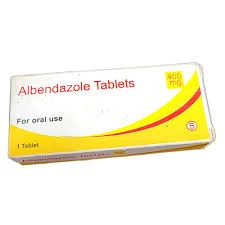- Afrikaans
- Albanian
- Amharic
- Arabic
- Armenian
- Azerbaijani
- Basque
- Belarusian
- Bengali
- Bosnian
- Bulgarian
- Catalan
- Cebuano
- Corsican
- Croatian
- Czech
- Danish
- Dutch
- English
- Esperanto
- Estonian
- Finnish
- French
- Frisian
- Galician
- Georgian
- German
- Greek
- Gujarati
- Haitian Creole
- hausa
- hawaiian
- Hebrew
- Hindi
- Miao
- Hungarian
- Icelandic
- igbo
- Indonesian
- irish
- Italian
- Japanese
- Javanese
- Kannada
- kazakh
- Khmer
- Rwandese
- Korean
- Kurdish
- Kyrgyz
- Lao
- Latin
- Latvian
- Lithuanian
- Luxembourgish
- Macedonian
- Malgashi
- Malay
- Malayalam
- Maltese
- Maori
- Marathi
- Mongolian
- Myanmar
- Nepali
- Norwegian
- Norwegian
- Occitan
- Pashto
- Persian
- Polish
- Portuguese
- Punjabi
- Romanian
- Russian
- Samoan
- Scottish Gaelic
- Serbian
- Sesotho
- Shona
- Sindhi
- Sinhala
- Slovak
- Slovenian
- Somali
- Spanish
- Sundanese
- Swahili
- Swedish
- Tagalog
- Tajik
- Tamil
- Tatar
- Telugu
- Thai
- Turkish
- Turkmen
- Ukrainian
- Urdu
- Uighur
- Uzbek
- Vietnamese
- Welsh
- Bantu
- Yiddish
- Yoruba
- Zulu
Nov . 06, 2024 18:45 Back to list
Guide to Effective Veterinary Disinfectants for Animal Care and Maintenance
Understanding Veterinary Disinfectants A Comprehensive Guide
In the realm of veterinary medicine, maintaining a clean and sterile environment is paramount for the health and safety of animals, staff, and clients. One of the critical tools in achieving this cleanliness is the use of veterinary disinfectants. This article aims to explore the different types of disinfectants, their applications, and considerations for their effective use based on a veterinary disinfectant chart.
What Are Veterinary Disinfectants?
Veterinary disinfectants are chemical agents employed to eliminate or reduce harmful microorganisms, including bacteria, viruses, fungi, and parasites on various surfaces within veterinary facilities. The use of appropriately selected disinfectants is essential in preventing the spread of infectious diseases among animals and ensuring a safe environment for healthcare workers.
Types of Veterinary Disinfectants
Disinfectants can be classified into several categories based on their chemical composition and mechanism of action
1. Alcohols These are commonly used for disinfecting surfaces and equipment. Ethyl alcohol and isopropyl alcohol are effective against a broad range of pathogens when used at concentrations of 60-90%. However, they are not effective against bacterial spores and must be used carefully to avoid flammability.
2. Quaternary Ammonium Compounds (Quats) These disinfectants are effective against many Gram-positive bacteria and certain viruses. They are often used in veterinary practices for disinfecting surfaces and equipment but may be less effective in the presence of organic matter.
3. Hypochlorites Sodium hypochlorite, commonly known as bleach, is a potent disinfectant effective against a wide range of pathogens. However, it can be corrosive and should be used with care, especially on metal surfaces. It is advisable to use it in diluted form and avoid mixing it with ammonia to prevent toxic gas formation.
4. Phenolics Phenolic disinfectants are effective against a broad spectrum of pathogens, including bacteria, viruses, and fungi. They are often used in veterinary hospitals for cleaning surfaces. However, some phenolics can be toxic to cats, so it’s essential to consider species-specific safety.
veterinary disinfectant chart

5. Peracetic Acid This disinfectant is effective against bacteria, viruses, and spores and is often used in sterilizing equipment and instruments. Peracetic acid decomposes into non-toxic byproducts, making it a safe option as long as it is used according to guidelines.
Choosing the Right Disinfectant
Selecting the correct disinfectant involves considering several factors
- Type of Pathogen Understand the specific microorganisms that need to be targeted. Certain disinfectants are more effective against specific pathogens.
- Surface Material Different materials may react differently to various disinfectants. For example, bleach can cause corrosion on metals, while some quats may leave residues on surfaces.
- Safety Concerns Evaluate any potential health risks for animals, staff, and clients. Consider the toxicity of the product and any safety precautions that must be taken during application.
- Contact Time The length of time a disinfectant needs to remain on the surface to be effective can vary significantly. Refer to the specific product guidelines for optimal results.
Conclusion
In conclusion, veterinary disinfectants play a crucial role in infection control and the overall health of animal facilities. Understanding the various types of disinfectants and their specific applications is vital for making informed choices that ensure the safety and well-being of all stakeholders involved. By following best practices and adhering to guidelines, veterinary professionals can effectively minimize the risk of infection and maintain a hygienic environment.
-
Guide to Oxytetracycline Injection
NewsMar.27,2025
-
Guide to Colistin Sulphate
NewsMar.27,2025
-
Gentamicin Sulfate: Uses, Price, And Key Information
NewsMar.27,2025
-
Enrofloxacin Injection: Uses, Price, And Supplier Information
NewsMar.27,2025
-
Dexamethasone Sodium Phosphate Injection: Uses, Price, And Key Information
NewsMar.27,2025
-
Albendazole Tablet: Uses, Dosage, Cost, And Key Information
NewsMar.27,2025













